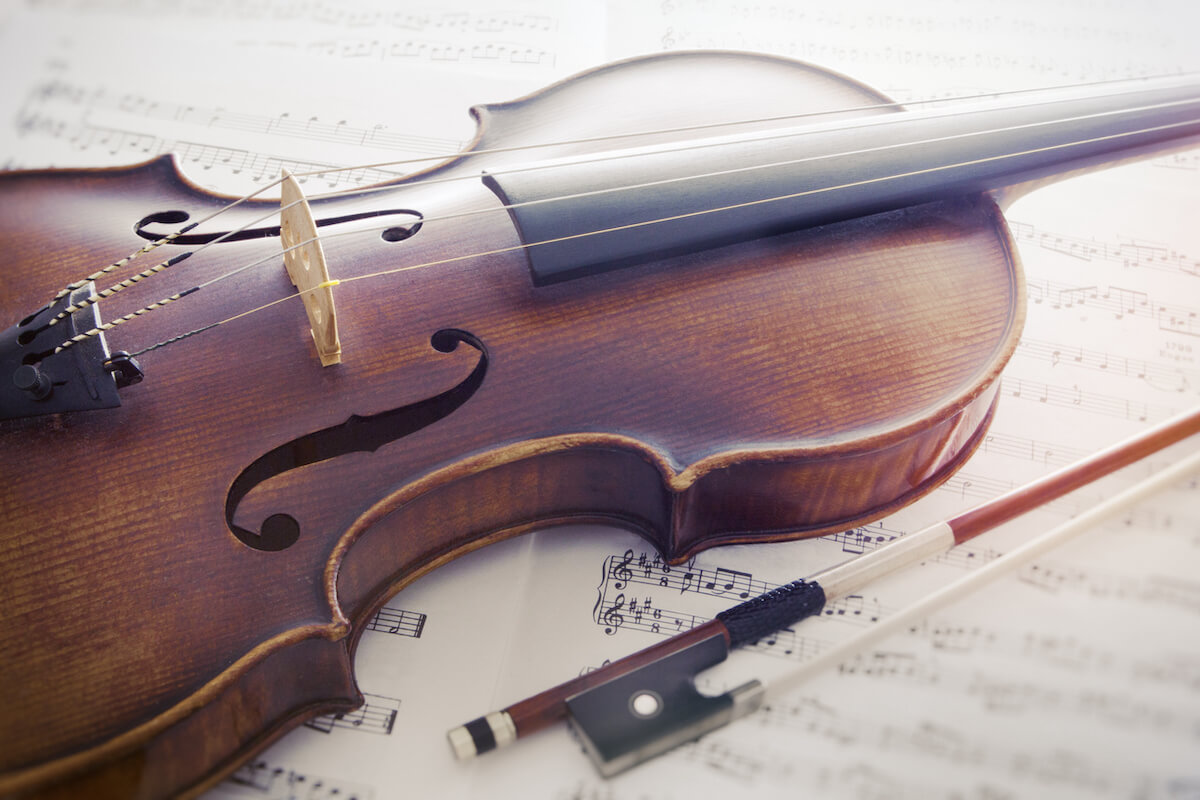The violin and viola look similar, are members of the string family, require a bow for playing, and even have similar-sounding names. Despite having so much in common, a few key differences exist between the violin and viola, including their size, sound, strings, and bows. Learning about these differences can help you decide which instrument is right for you.
Viola and Violin Size
Size is one of the biggest differences between these instruments, but is a viola smaller than a violin? It’s actually the opposite. On average, full-size violas are 15.5–16.5 inches long, while full-size violins only average 13–14 inches.
Difference in Strings
The viola and violin both have four (sometimes five) strings made from the same materials, but that’s where their string-related similarities end. From lowest to highest, the strings on a viola are C, G, D, and A. On a violin, they are G, D, A, and E.
The viola also has thicker strings and is tuned one-fifth lower than the violin.
How Violas and Violins Sound
One sure way to tell the difference between a viola and a violin is by listening to them. The violin’s top string is E, so it is known for its higher pitch and elegant sound. Its clear, bright notes make the violin a popular choice for solo pieces.
The larger size and thicker strings of the viola produce a deeper, more mellow sound. But the viola isn’t as low as the cello, bringing balance to the string family. This balance is why the violists sit between the violinists and cellists in an orchestra.
Alto vs. Treble Clef
The clef is another significant difference between violins and violas. Violins are played in the treble clef and are the highest string instrument. If they were to have a human voice, you could think of them as the sopranos of the orchestra.
The viola is the only string instrument played in the alto clef, allowing it to reach those deeper notes. As the clef name suggests, the viola is like the alto of the orchestra.
Violin Bow vs. Viola Bow
You need a bow to play the violin or viola, but these instruments differ in their bow weight, stiffness, and frog shape.
Weight
Since the viola is larger and has bigger strings, it requires a heavier bow to play. Viola bows have an average weight of about 70 grams. The average violin bow weighs around 10 grams less at 60 grams.
Stiffness
The thick strings of a viola also mean a heavier hand is needed while playing, so viola bows are usually stiffer than their violin counterparts. Attempting to play the violin with a viola bow could be difficult since the lack of flexibility makes it harder to create the quick strokes the instrument often demands.
Frog Shape
Violin and viola bows have different frogs (the part of the bow you hold). Violin bows tend to have frogs with a straight edge, while the frog on a viola bow is generally curved.
Which Is Better: Violin or Viola?
There is no hard and fast answer on whether the violin or viola is a better instrument. Each has advantages and disadvantages, so it all comes down to the musician and their preferences.
Advantages and Disadvantages of the Violin
If you’re interested in higher notes, more prestige, or solo opportunities, the violin could be the right choice. The violin is also more versatile, allowing you to play across genres like classical music, jazz, rock, folk, and even pop.
However, the violin’s popularity means many more musicians play it, leading to more competition among violinists.
Advantages and Disadvantages of the Viola
The viola is excellent for musicians interested in slow, dark notes. Another advantage is that there are far fewer viola players, and orchestras are often looking for skilled violists. You may have fewer opportunities than a violinist, but there will be less competition.
The size and heft of violas are the biggest drawbacks. They weigh more, and their strings require more pressure, so playing the viola takes more physical strength. Also, while every instrument is important, violas are usually understated, their sound easily fading into the background. If you’re someone who wants to be in the limelight, you may want to consider the violin.
Worried about committing to an instrument? If you start with one and don’t like it, you can always pick up the other. Or you can start with both and stick to the one you enjoy more.
Viola or Violin, Choose the Premier Carbon Fiber Bow
Whether you play the viola or violin, you need a quality bow to produce the best sound possible. CodaBow has a great selection of award-winning bows made for musicians of all levels. Find a trusted nearby dealer or shop performance viola and violin bows online today.



Stay Connected